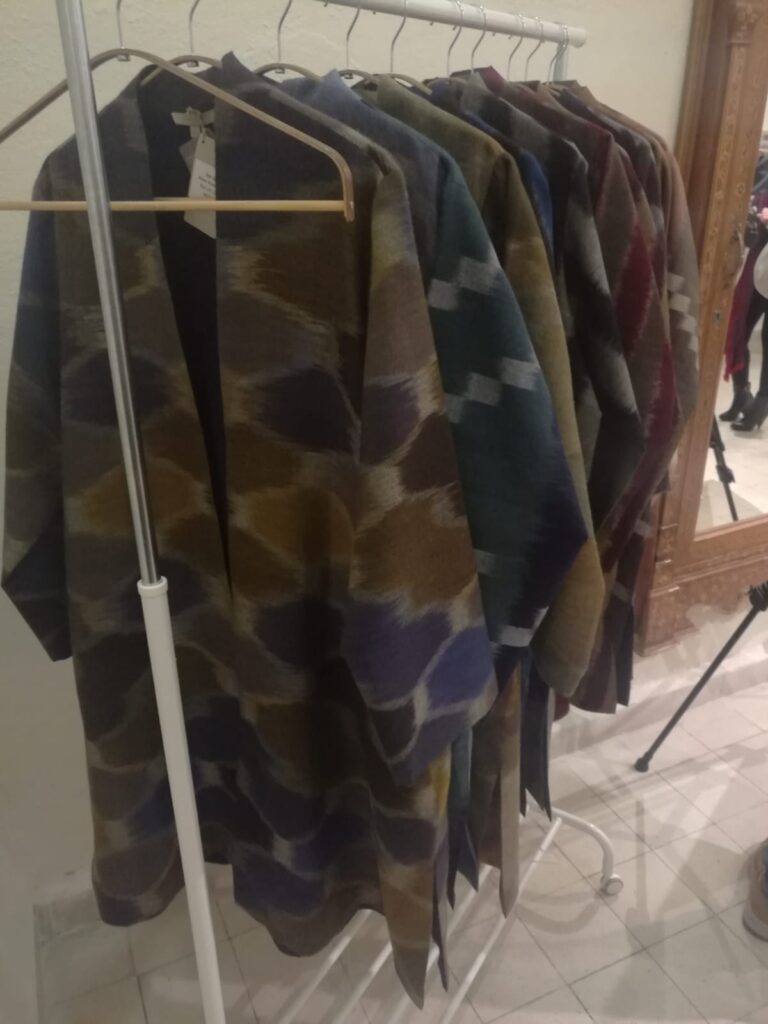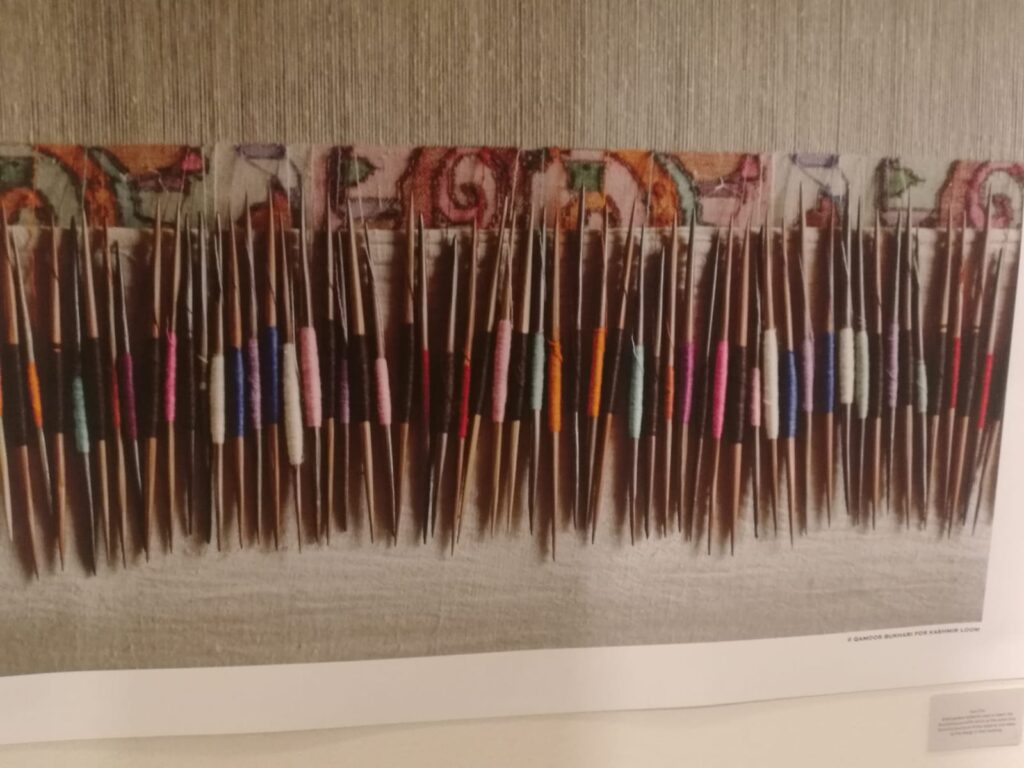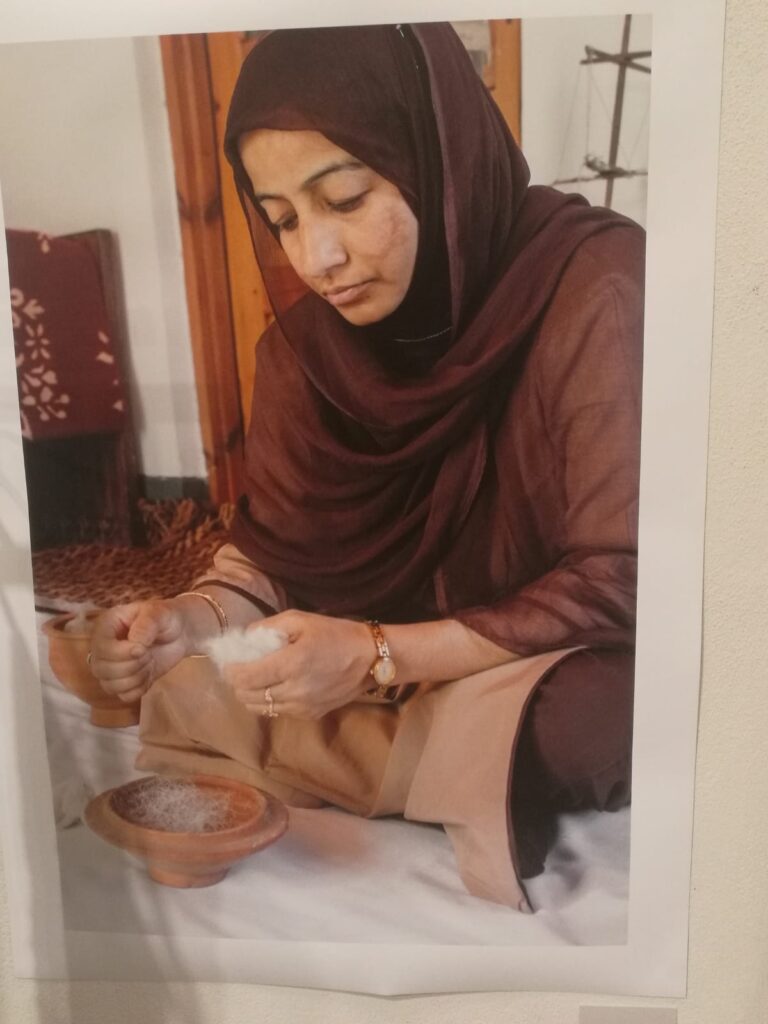15/01/2024
15/01/2024

KUWAIT CITY, Jan 15: The Sadu House Kuwait in collaboration with Kashmir Loom Company India is organizing the Kashmir Textiles Exhibition at Sadu House, Arabian Gulf Street, Kuwait City from Jan 14 to Jan 18 between 10 am and 1:00 pm and 4:00 to 8:00 pm.
The exhibition features exquisite textiles and heirloom Kani weave and sozni embroidered pashmina shawls from Kashmir, India. The Kashmir shawls represent a timeless blend of artistry, tradition, and luxury. The intricate craftsmanship and cultural significance make them highly prized and sought after globally.

Additionally, the event displays a collection of contemporary shawls, stoles and scarves from Kashmir Loom.
For the first time in Kuwait, the exhibition also presents Kashmir Loom’s vintage-style coats with hand embroidery and Ikat-dyed Pashmina, along with curated collection of hand-embroidered cushions and home objects in the traditional craft of Papier Mache.
The opening night began with an illustrative talk by Kashmir Loom founder Asif Ali who spoke at length about the origin and art of making Kashmir shawls, often referred to as ‘Pashmina’ or ‘Cashmere’ shawls, which have a rich history and are renowned for their exquisite craftsmanship, luxurious feel, and timeless beauty.
The art of making Kashmir shawls, he said, dates back several centuries and has its roots in the Kashmir Valley, a region situated in the northern part of the Indian subcontinent. The craft of weaving fine textiles in Kashmir can be traced as far back as the 3rd century BCE.

The authentic Kashmir shawls are made from the fine wool of the Pashmina goat, which is indigenous to the Himalayan region. Pashmina wool is known for its softness, warmth, and lightweight texture. In addition to Pashmina wool, Kashmir shawls may also be crafted using other types of wool, silk, or a blend of these materials.
He went on to say, traditional Kashmiri shawls are often handwoven on looms. Artisans use various weaving techniques to create intricate patterns and designs. Nonetheless, many Kashmir shawls feature exquisite embroidery, known as "Aari" or "Sozni" embroidery, which involves intricate hand-stitching with fine needles.
The Jamawar Shawls are a special type of Kashmir shawl known for their paisley patterns and vibrant colors and extensive use of brocade weaving while the Pashmina Shawls made from the fine wool of Pashmina goats, are highly prized for their softness and warmth.
The Kani shawls are rafted using the Kani weaving technique, featuring intricate designs and patterns; while the sozni shawls are adorned with detailed needlework, often depicting floral motifs and intricate patterns.
Historically, he said, Kashmir shawls were highly sought after, receiving patronage from Mughal emperors and European royalty. The Kashmir shawls have gained international acclaim and are cherished as high-end fashion accessories.
While traditional craftsmanship is still valued, contemporary designers have introduced modern designs to cater to changing tastes and are now sold worldwide, and their popularity extends beyond traditional markets, he said.
The traditional craft faces challenges such as competition from machine-made imitations and the need for sustainable livelihoods for artisans but efforts are being made to preserve and promote the art of Kashmir shawl making through various initiatives and organizations.
By Paul Francis X. Fernandes
Arab Times/Al-Seyassah Staff


